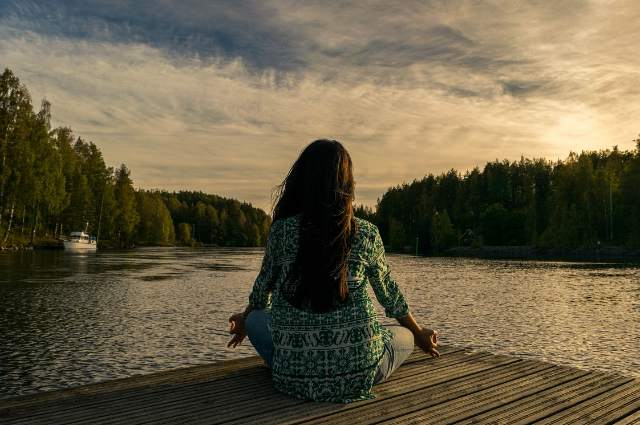
Image by Shahariar Lenin from Pixabay
In a world that constantly pulls us in a thousand directions, where silence is scarce and stillness is misunderstood, I found an ancient path that brought me closer to my true self—Vipassana meditation. The Art of Living Through Vipassana is not just about sitting in silence; it’s about watching your mind unravel, layer by layer, until you meet the raw essence of your being.
The Origins and Philosophy of Vipassana
Vipassana, which means “to see things as they really are,” is one of India’s most ancient meditation techniques. Rediscovered by Gotama the Buddha more than 2,500 years ago, it is a non-sectarian technique that aims at the total eradication of mental impurities and the highest happiness of full liberation.
Unlike many spiritual or wellness practices that focus on external rituals or symbolic gestures, Vipassana goes straight to the root—the mind. It teaches observation of bodily sensations and breath, promoting awareness, equanimity, and compassion.
My Journey Begins: The First 10-Day Course
My first course was in 2017. I arrived at the center carrying not just my luggage but emotional baggage from years of stress, health issues, and unresolved grief. The initial days were the hardest—complete silence, waking up at 4 a.m., no reading, writing, or even eye contact. My mind screamed in resistance. But as the days passed, something incredible began to happen.
I started to observe my thoughts rather than react to them. The storm inside me started to settle. For the first time in years, I wasn’t running away from myself. I was meeting myself fully, honestly, without distractions.
The Silence Speaks
Each subsequent course—four in total—was a new journey. With each one, I delved deeper. I started understanding the impermanent nature of pain and joy. I realized that everything—sorrow, anger, fear—arises and passes away. This awareness helped me detach from suffering. I stopped clinging to the past or fearing the future. I became an observer.
In silence, I found answers that words never gave me. The inner chatter slowed, and I learned the value of discipline, patience, and self-compassion.
Vipassana and Health: A Turning Point
Before discovering Vipassana, I faced multiple health crises—brain fever, pulmonary tuberculosis, PCOS, a slip disc, and depression. These weren’t just physical battles; they were spiritual ones. My body was crying out for rest and realignment.
Vipassana became that healing balm. While it wasn’t a magical cure, it brought awareness to my body and breath. I began to listen to my body’s needs instead of ignoring or fighting them. My healing journey accelerated. Combined with yoga and homeopathy, Vipassana gave me a fresh perspective on pain and healing.
Relationships and Inner Strength
Vipassana also redefined my relationships. I stopped reacting impulsively. I learned to listen deeply—to myself and to others. The technique instilled empathy and calmness, even in challenging situations. Most importantly, I stopped seeking validation from the outside world. I became secure in my silence.
Vipassana in Daily Life
Many ask, “But how do you maintain this in daily chaos?” The answer lies in integration. Vipassana isn’t something you leave at the meditation center. It’s something you live. By observing small things—your breath during an argument, your heartbeat when stressed—you bring presence into your life. And in that presence, transformation happens.
Why Everyone Should Experience It?
Vipassana is not tied to any religion or belief system. It’s a universal tool for self-exploration. In a world suffering from anxiety, burnout, and emotional numbness, this ancient technique offers a mirror to look within. It’s not easy. But it’s worth it.
Final Thoughts
The Art of Living is not in avoiding suffering but in understanding it. Vipassana taught me that. It stripped away my assumptions and brought clarity. It gave me tools—not to escape life, but to embrace it fully.
If there is one gift I would wish upon every person, it is the chance to sit with themselves in silence. Not to judge. Not to fix. But simply to be. Because in that stillness lies freedom.
